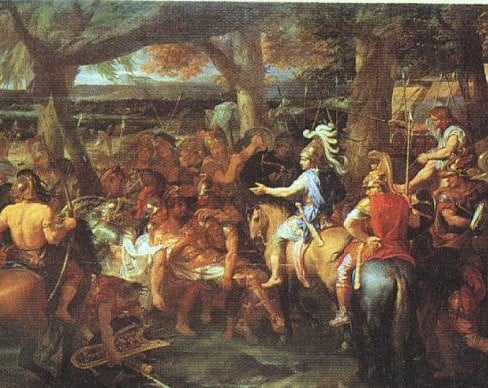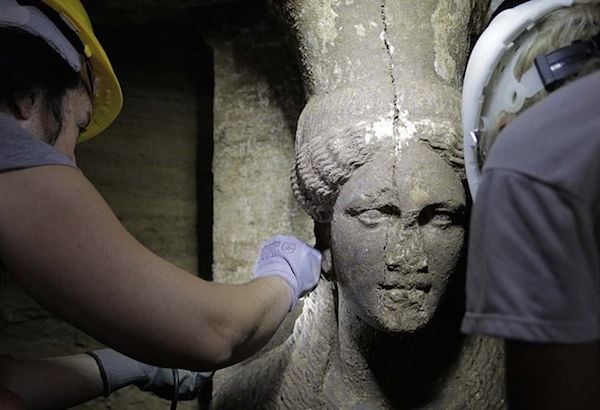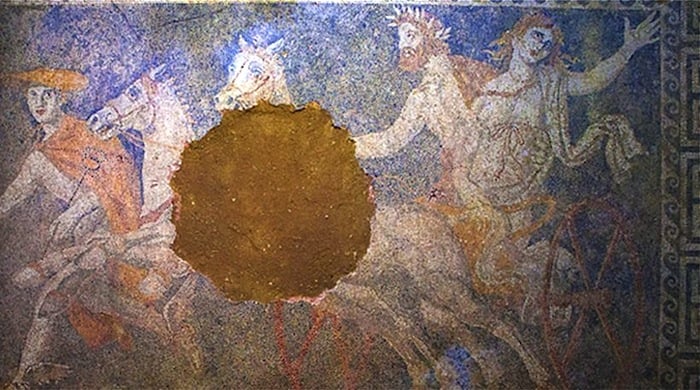Art World
Archaeologists Solve Riddle of Mysterious Alexander the Great-Era Tomb
Some speculate that Alexander the Great's closest friend was also his lover.

Some speculate that Alexander the Great's closest friend was also his lover.

Sarah Cascone

After over a year of excavations on the massive ancient tomb opened this past summer in northern Greece, archaeologists believe the site was a monument to Hephaestion, the childhood friend and right-hand man of Alexander the Great.
“We surmise it was a funerary heroon (hero worship shrine) dedicated to Hephaestion,” said Katerina Peristeri, head archaeologist at the site, according to Agence France Presse. She added, “I do not know if he is buried inside.”
Previous excavations at the site have uncovered well-preserved caryatids sculptures and mosaics, as well as coins bearing the face of Alexander the Great.

One of the two unearthed Caryatid statues
Photo: courtesy the Greek Ministry of Culture.
Alexander and Hephaestion were born in the same year and grew up together. Hephaestion went on to become Alexander’s leading general, and some modern scholars even speculate that the two men were lovers.
Both died young, Hephaestion predeceasing his friend, who passed away at just 32, by a mere eight months. A grief-stricken Alexander was known to have constructed monuments to his fallen friend across the empire, and the recently-excavated Grecian tomb is now believed to be one of them.
Peristeri believes the tomb dates dates from 325–300 BC, and contains inscriptions bearing Hephaestion’s monogram. The general died in 323 BC.

A mosaic at Amphipolis depicting Persephone.
Photo: courtesy the Greek Ministry of Culture.
Her claims have been challenged by Panayiotis Faklaris of Aristotle University of Thessaloniki, who, according to the BBC, told Greek radio “that there was no indication that the tomb had any connection to Hephaestion or that Alexander had ordered it to be constructed.”
The largest tomb ever discovered in Greece, the site has led to wild speculation among the archaeological community, with some theorizing that it held the remains of Alexander’s wife, Roxane, or his mother, Olympias. So far, the remains of an elderly woman, two men, a newborn baby, and several animals have been uncovered.
This past July, archaeologists also uncovered a rare mosaic of the Macedonian conqueror at a 5th-century synagogue in Israel.